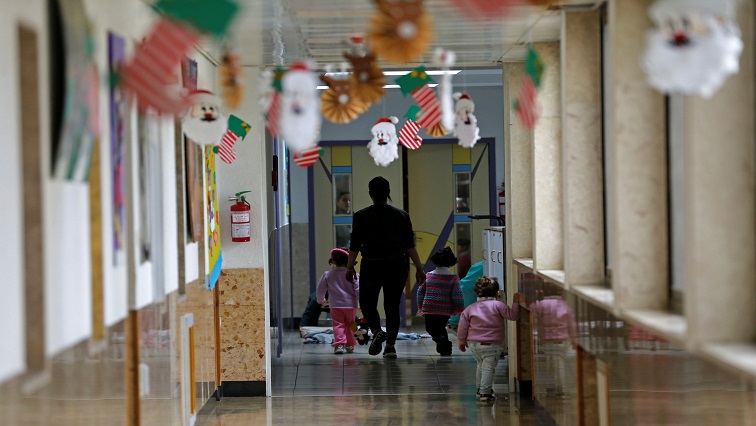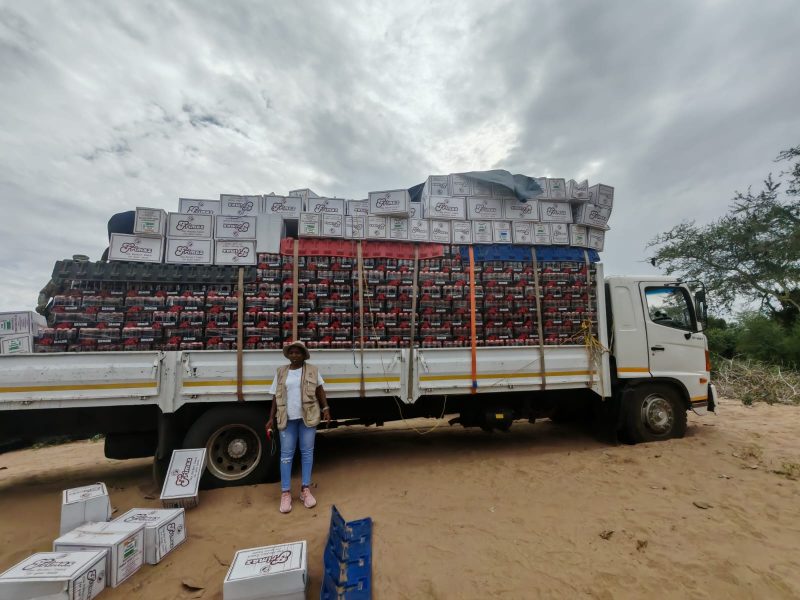-
A staff member walks with children at a house sheltering children.
The KwaZulu-Natal Health Department has started screening children at schools after an outbreak of foot-hand-and-mouth north of Durban.
Since the outbreak over a week ago, the number of cases has risen to 117 at more than 10 creches, daycare centres and primary schools.
The department says it’s a usually mild viral infection that affects mostly young children.
This disease is transmitted from person to person and is not the same as the foot-and-mouth disease in animals.
Parents have been asked to keep infected children at home until the symptoms go away.
The head of communicable disease control at the Department of Health in KwaZulu-Natal, Babongile Mhlongo says Durban has previously had cases of hand-foot-and-mouth disease, but it has not formed clusters of cases in different educational institutions before.
She described the virus as “A usually mild viral infection that affects young children – occurring in the summer and autumn.”
Since the outbreak was noted just over a week ago, the number of cases has risen to 117 at creches and at least 5 primary schools in Phoenix, Greenwood Park and Umhlanga.
Mhlongo says health officials are visiting creches and schools to screen for the disease.
“The teams are out there, even the school health teams they are visiting some of this early childhood development centres just to screen for those that are symptomatic and I think already there was quite a number that they visited. And then those children who are showing symptoms they referred them to the nearest health facility and for the parents to pick those children that are really showing symptoms.”
The disease causes flu-like symptoms, fever, a sore throat, and painful blisters.
Mhlongo advises parents to take their children to a health facility or a doctor as soon as they complain about any of these symptoms.
“Parents must not pop the blisters because they can be very painful, and I think that’s what we have seen with some of the kids that have even been admitted to some of the hospitals. It’s because of the pain that is coming from the blisters.”
“As I’ve indicated it’s almost all the parts that you would use: your mouth, because it would also appear on the sides of your tongue, on your palms and the soles of your feet. So it’s painful for the young ones,” explains Mhlongo.
The disease is passed on from person to person, by droplets from the mouth and nose, as well as on shared surfaces.
Mhlongo says for this reason children should stay at home until they no longer show symptoms.
“The symptoms normally start between 3 to 7 days after being exposed to a sick person, but then the disease would last between 7 and 10 days. So we’re saying when the child has started showing symptoms, all the flu-like symptoms.”
“We’re saying at least 5 days after the onset of symptoms so that you make sure that the kid is safe at home and is unable to transmit to other children. Because what we’re seeing is the transmission at the early childhood development centres.”
Mhlongo says there’s no risk that the disease would be transferred between humans and animals.
“The current hand-foot-and-mouth disease that we’re seeing in Durban, it’s not the same as the foot-and-mouth that normally affects animals. It’s not a zoonotic condition the one that we have, meaning that it cannot be transferred from the animals or transmitted from the animals to the human beings.”
“So if you have cows don’t be worried and try to isolate those cows because they will transmit the disease. It’s totally different disease.”
Parents, children and teachers are encouraged to practice good hygiene by washing hands regularly, cleaning surfaces and preventing children from sharing toys.











